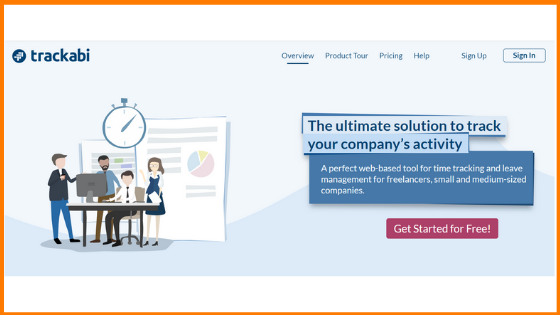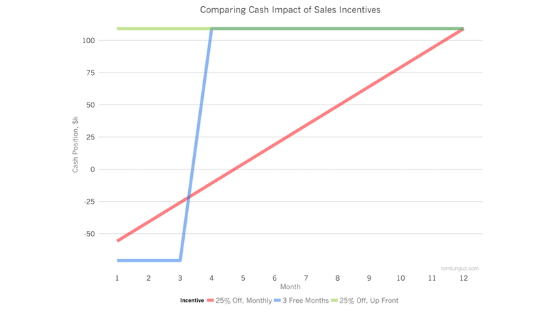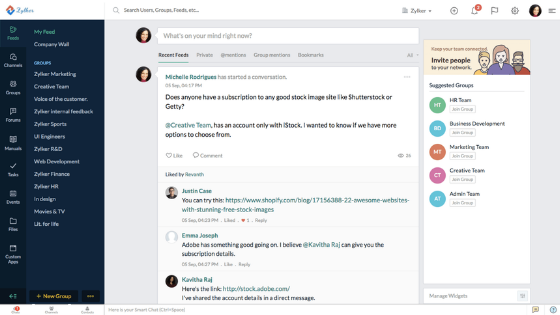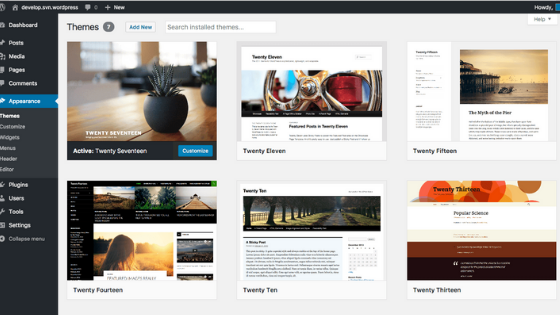The rise of remote work might be unavoidable, and you should want to take advantage. Allowing remote work can benefit not only your employees, but you as a manager and the organization as a whole. Not only do remote workers tend to enjoy what they do more and find remote work less stressful in general, but they’re more willing to put in extra hours as a result. However, that’s just one of the potential benefits of remote work for employees, managers, and companies alike. Remote work is about more than just the advancement of technology, it’s something that has the potential to help the way we work, manage, and lead.

With 50% of the workforce working in some sort of telecommuting role and 80 to 90% of all employees saying they would like to work remotely at least part of the time, according to Global Workplace Analytics, offering remote opportunities is an attractive way to gain productive workers. That’s just the beginning, though. According to Owl Labs State of Remote Work 2019, 42% of remote workers have plans to work remotely more often over the next five years than they do now.
Also read:
The Challenges of Managing Remote Employees
While there are great potential benefits of allowing remote work on your team, there’s a problem: most founders and managers still aren’t familiar with the challenges of managing remote employees. Remote work is different from the typical work structure in a few big ways. And while there are big benefits, there are also new and unique challenges with both hiring and managing remote employees that managers never see coming.
According to Buffer’s State of Remote Work report, these are the major challenges with remote work in general: Without any prior experience working remote it can be hard anticipating the challenges your remote employees will face.

- Loneliness and isolation – Regular human interaction can be easy to take for granted, until you don’t have an office full of people to be around every day. Do what you can to engage them socially with the rest of the team whenever possible.
- Communication issues due to a lack of non-verbal cues – When you don’t have enough face-to-face communication, it can become difficult to sense intent in messages between you and your employee. It’s harder to understand a message when it’s only text, or you don’t know them as well as other, in-office employees.
- Feeling left out – The feeling of being left out– of company celebrations, consideration for a promotion, and your opinion in general– is more common among remote employees than those on-site. When you work remotely, you miss out on so many opportunities to connect with your colleagues and managers.
- Monitoring – You can’t physically monitor them.
- Feedback system – Reviewing work and providing feedback is difficult.
- If you have multiple remote employees, it’s hard to keep them moving in the same direction.
Relevant read:
- How to Launch your SaaS Business?
- Top Sources for Email Design Inspiration
- Email Writing for Awareness Stage
Top 7 Tips for Managing Remote Employees
Remote management can feel like a totally different challenge than managing people you work side by side with. Things that work in an office don’t always translate exactly to remote employees. Use these tips to be more conscious of the unique approaches you should take for managing remote employees.
Hire the Right People
Let’s face it- not everyone can be a remote worker. Everyone loves the flexibility of working remotely. But only some have the attitude and discipline to be productive as remote employees. When hiring a remote employee, look for people who can work independently.
Good remote workers have a positive attitude and motivation to do their job well. You don’t want people who always need a push to complete the task. It will be a nightmare if you have to micro manage your remote employees. A good remote employee will not wait for you to ask for updates or assign tasks. Rather, he or she will proactively update you on the status and schedule.

Always hire employees who communicate well as it’s the key to a successful remote team. The better your remote employees understand your instructions and communicate with you, the easier it will be to manage them.
Set Clear Expectations
Everyone has a different idea of what doing something “quickly” or “well” means. Whether showing examples of what you expect to be done, calendar sharing, etc., make sure you have clear expectations from those you work online. The more prepared they are, the better they can serve.

Explain what you want from your remote employees and when you want it. There is no better way for managing remote employees than using well-defined and measurable goals.
How to:
Engage Regularly
It’s hard to keep all employees on the same page if you have multiple remote employees. Engage with your remote workers on a daily basis through some kind of communication. Use multiple channels to communicate. Then, plan a regularly scheduled face-to-face meeting.

This can be weekly, monthly, or annually, and could be combined with a training or coaching program. This constant interaction and engagement will help remote workers feel included in an important aspect of the organization. You can identify issues early and manage them better with frequent communication.
Have Reliable Tools First
If remote employees can’t download files, struggle hearing on a conference call, and consistently receive meeting invitations for times when they are still asleep, you have failed to address the basics. First, invest in reliable tools to make collaboration possible. Then develop clear processes to use such tools.
These are some of the Tools to Help You Boost Team Collaboration.
Track Progress of Your Remote Employees
Be sure to track the progress of your remote employees daily. You stay on top of project status and eliminate nasty surprises later by reviewing work every day. Give your remote workers periodic feedback to ensure they are heading in the right direction.
Here are some tools you can use to track time, project status, and tasks:
- HiveDesk is a time tracking software for managing remote employees. You can create automatic timesheets, capture screenshots, track project & tasks, and measure productivity with HiveDesk. Start your 14-day free trial.
- Hubstaff is a staff monitoring software which screenshots the activity levels.
- Asana is a project management software that allows you to organize to-do lists, projects & meeting information, conversations, and emails in an easy-to-read dashboard.
- Trello is a project management tool that allows you to manage tasks and projects.
Must read:
Stay Focused on Goals, Not Activity
It is important to manage expectations and stay focused on goals when embracing a remote workforce. Don’t worry as much about what is being done. Instead, concentrate on what is being accomplished. If we are meeting our goals, then great. If not, we need to look into the situation further. It is all about accomplishment, not activity.
Conclusion
There’s a lot about managing remote teams that’s exactly the same as managing those on-location. However, it’s a mistake to assume that a remote employee is the same as one working in the same office as you. Remote employees are faced with unique challenges and you have to understand those challenges to effectively manage your entire team. What do you think of this list of tips to for managing remote employees? Please share it with your team and followers on social media.




















































